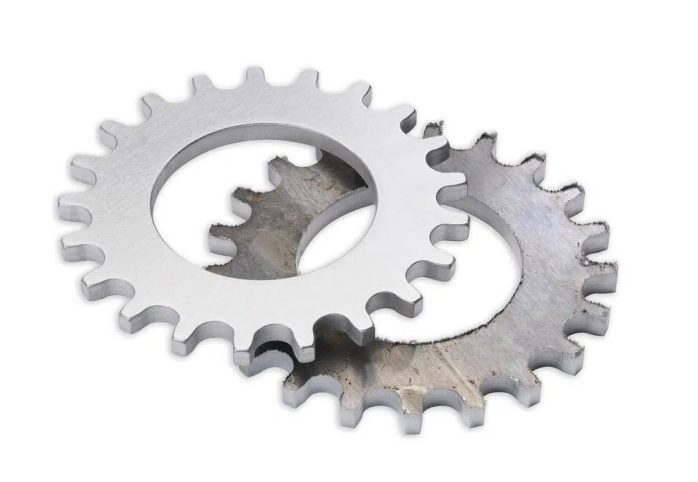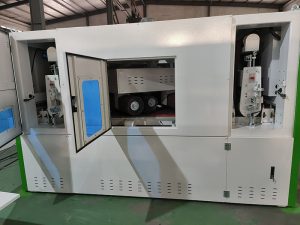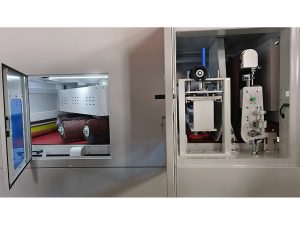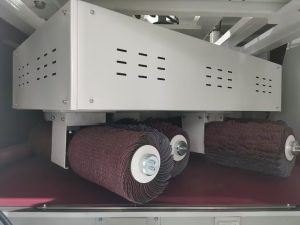How to Choose the Right Solution for Your Metal Finishing Needs
Apr 14 ,2025
Wet vs. Dry Deburring Machines
In the metal manufacturing industry, burrs directly impact part precision, safety, and aesthetics. Traditional deburring methods are inefficient and risk damaging critical components. Wet and dry deburring machines offer advanced solutions—but how do you select the right technology for your needs? This article compares the advantages, applications, and key factors of both systems to help you make an informed decision.
Wet Deburring Machines: Precision Engineering for Complex Parts
Wet deburring machines use liquid media (water mixed with abrasives or chemicals) to penetrate intricate geometries. They excel at removing **100% of burrs** from tight spaces like blind holes or internal channels in small parts, such as hydraulic valves or 3D-printed aerospace components.
Core Advantages
– Superior Surface Finish: Achieves Ra 0.2–0.8μm finishes, rivaling polished optics—ideal for semiconductor molds.
– Thermal Control: Prevents warping in heat-sensitive metals like aluminum.
– Dust-Free Operation: Complies with OSHA standards for materials like magnesium and titanium.
– High Efficiency: Multi-axis automation boosts throughput by 50%, perfect for high-volume production.
Ideal Applications: Medical implants, gears, and parts with complex geometries requiring extreme precision.

Dry Deburring Machines: Cost-Effective Simplicity
Dry deburring systems use abrasive belts, brushes, or blasting for large sheet metal parts or simple shapes. Key benefits include:
– Lower Initial Costs: No liquid filtration systems reduce upfront investment.
– Fast Edge Smoothing: Ideal for non-porous materials like stainless steel.
– Easy Maintenance: No liquid residues minimize upkeep.
Industry Insight: A survey in sheet metal processing shows dry deburring can reduce per-piece costs by up to 18% for simple geometries.
Wet vs. Dry Deburring: 3 Key Comparison Factors
1. Material Compatibility
– Wet: Best for heat-sensitive alloys (e.g., aluminum). Avoid untreated cast iron (risk of rust).
– Dry: Avoid ductile metals like copper (risk of microtears).
2. Operational Costs
– Wet: Requires filtration maintenance but cuts waste disposal costs by 30%.
– Dry: Lower maintenance but needs dust collection upgrades.
3. Part Complexity
– Wet: Fluid dynamics handle intricate shapes (e.g., gears, internal channels).
– Dry: Linear abrasion suits flat or simple curved surfaces.
Final Recommendation: Match Technology to Your Needs
– Choose Wet Deburring: For high-precision, complex parts or large-scale production.
– Choose Dry Deburring: For budget-friendly projects or processing large sheet metal with simple geometries.
At ADV MACHINERY, we provide customized wet and dry deburring solutions that balance innovation and cost-efficiency. Whether you’re crafting aerospace components or industrial sheet metal, we deliver burr-free, high-quality results.
| Comparison Item | Wet Deburring Machine | Dry Deburring Machine |
| Deburring Accuracy | High (can reach micron level) | Medium (depends on abrasive particle size) |
| Workpiece Protection | Prevents overheating and reduces deformation risk | May scratch or damage the workpiece |
| Environmental Impact | No dust, and wastewater can be treated | Dust is produced and requires a dust collection |
| Cost | Higher (relies on coolant and other consumables) | Lower (relies on abrasive materials) |
| Applicable Materials | Metals, hard materials, some plastics | Metals, hard alloys |
Contact our experts today for a tailored deburring strategy!
MORE METAL FABRICATION SERVICE >>>
Laser & Punched Parts automatic Deburring machine form ADV 508





